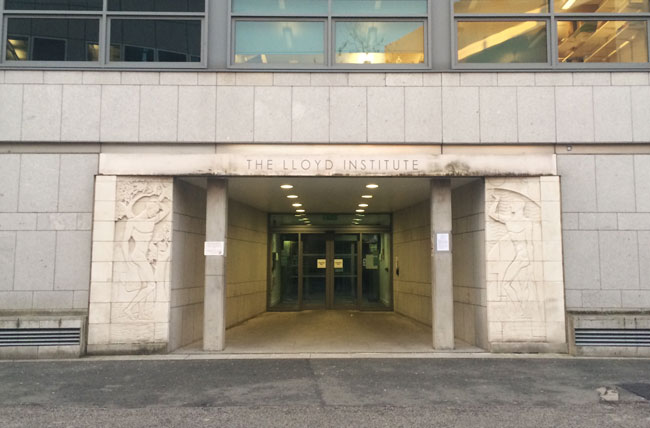Work on refurbishing the Lloyd Building to accommodate the new Global Brain Health Institute (GBHI) is expected to be completed by late August, ready for the start of term in September.
In an email to The University Times, Paul Mangan, Director of Estates and Facilities, stated that the work to the building, which began in April, will be finished before the start of the academic year. The construction, when complete, will provide new facilities for up to 24 research fellow and scholars. The majority of the work has involved the replacement of nine of the existing windows on the ground floor of the Lloyd Institute after the planning permission was granted by Dublin City Council earlier in the year.
The work being carried out will provide new administrative spaces and laboratory spaces for 40 postdoctoral students, and also includes the installation of a seating area in the walkway between the Lloyd building and the Sami Nasr Institute of Advanced Materials (SNIAM) and the replacement of a current roller shutter with a window on the north facade. Mangan said that the space “will be refurbished to a high standard” in time for the planned finishing period of late August.
GBHI is an initiative funded by a €138 million donation from Chuck Feeney’s foundation, Atlantic Philanthropies – the largest donation in Irish history. A collaboration between Trinity and the University of California, San Francisco, the institute is working to reduce the scale and impact of dementia around the world. It is currently accepting applications for its 2018 class of Atlantic Fellows for Equity in Brain Health.
Large-scale construction is currently taking place elsewhere on campus, as the development of the new Trinity Business School on the old site of Luce Hall continues and the construction of Oisín House into a 250-bed accommodation project is expected to begin shortly.
Work is also ongoing on the upgrade to the College’s voltage system, which will see construction take place across campus until December. These upgrades promise to reduce the risk of a power failure and support the new buildings and sites being developed across campus.







